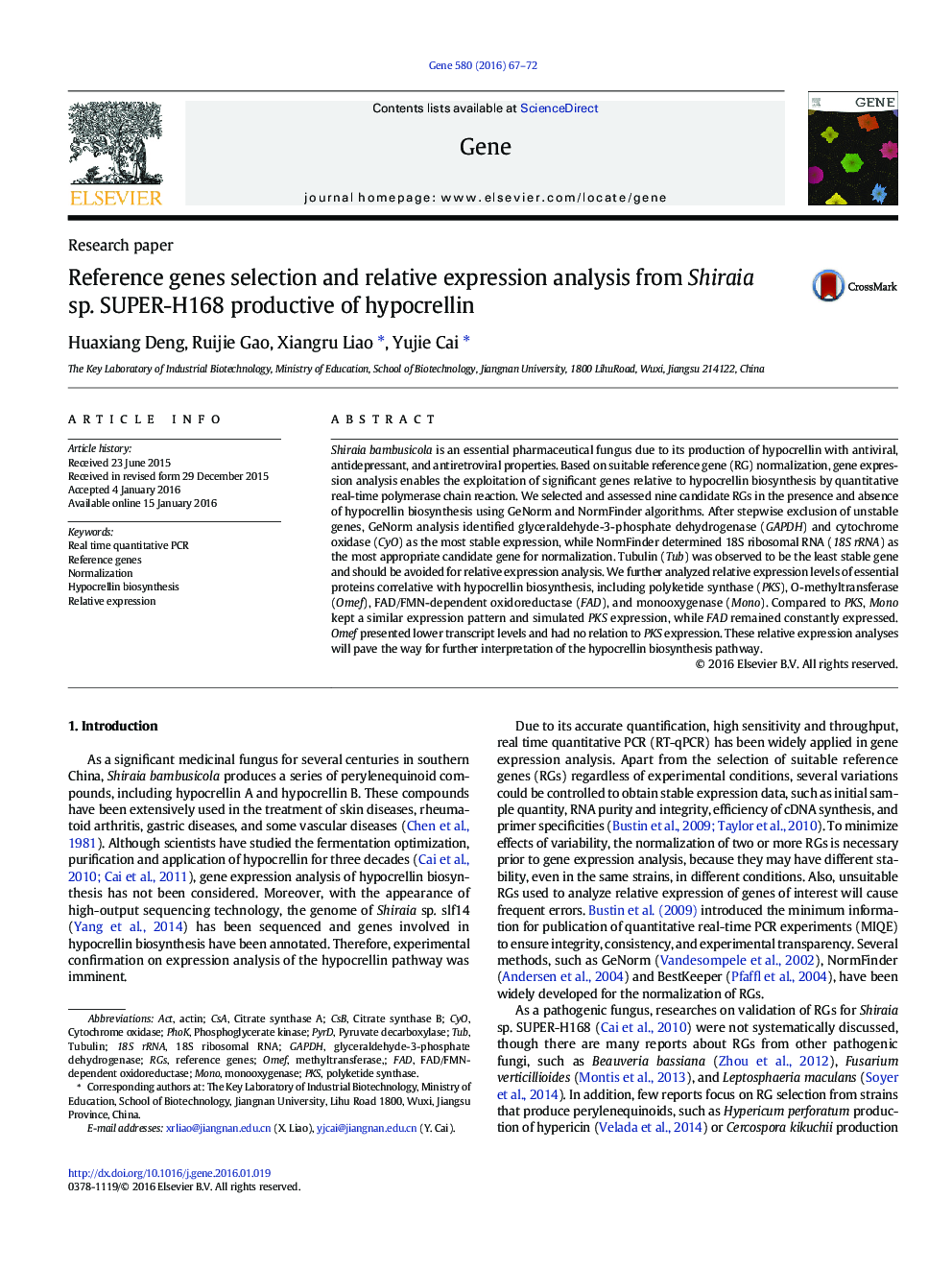| Article ID | Journal | Published Year | Pages | File Type |
|---|---|---|---|---|
| 2815148 | Gene | 2016 | 6 Pages |
•Reference genes (RGs) were screened for Shiraia sp. SUPER-H168.•Optimal RGs were validated with polyketide synthase.•Expression level of essential genes of hypocrellin biosynthesis was discussed.
Shiraia bambusicola is an essential pharmaceutical fungus due to its production of hypocrellin with antiviral, antidepressant, and antiretroviral properties. Based on suitable reference gene (RG) normalization, gene expression analysis enables the exploitation of significant genes relative to hypocrellin biosynthesis by quantitative real-time polymerase chain reaction. We selected and assessed nine candidate RGs in the presence and absence of hypocrellin biosynthesis using GeNorm and NormFinder algorithms. After stepwise exclusion of unstable genes, GeNorm analysis identified glyceraldehyde-3-phosphate dehydrogenase (GAPDH) and cytochrome oxidase (CyO) as the most stable expression, while NormFinder determined 18S ribosomal RNA (18S rRNA) as the most appropriate candidate gene for normalization. Tubulin (Tub) was observed to be the least stable gene and should be avoided for relative expression analysis. We further analyzed relative expression levels of essential proteins correlative with hypocrellin biosynthesis, including polyketide synthase (PKS), O-methyltransferase (Omef), FAD/FMN-dependent oxidoreductase (FAD), and monooxygenase (Mono). Compared to PKS, Mono kept a similar expression pattern and simulated PKS expression, while FAD remained constantly expressed. Omef presented lower transcript levels and had no relation to PKS expression. These relative expression analyses will pave the way for further interpretation of the hypocrellin biosynthesis pathway.
